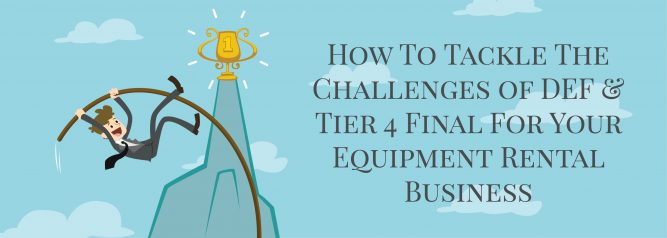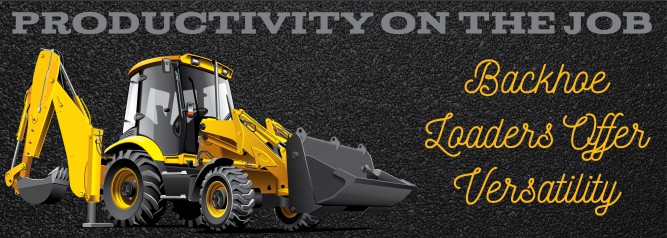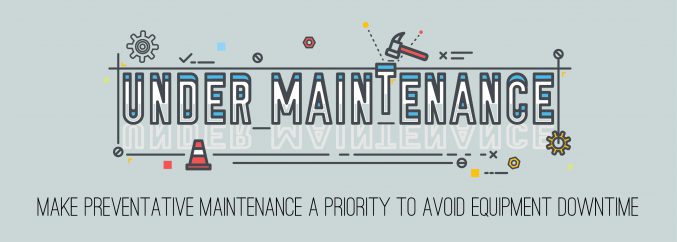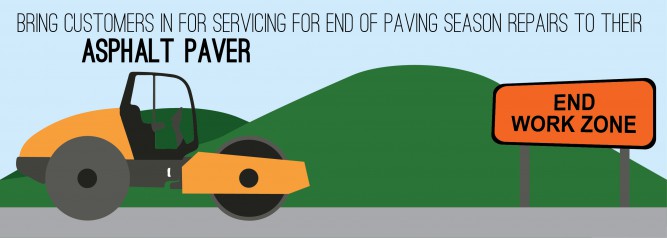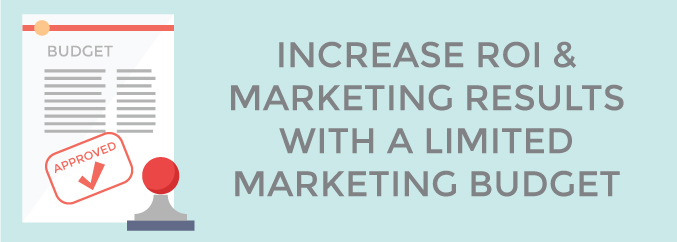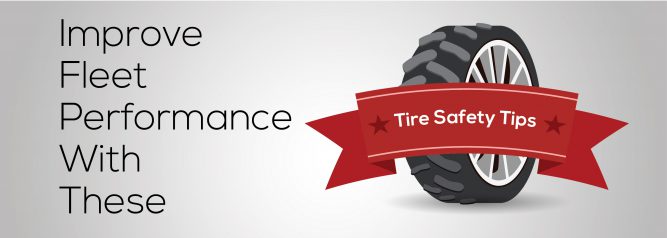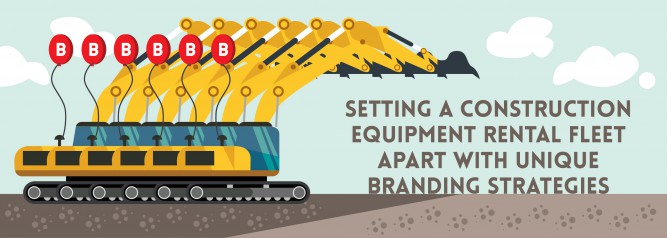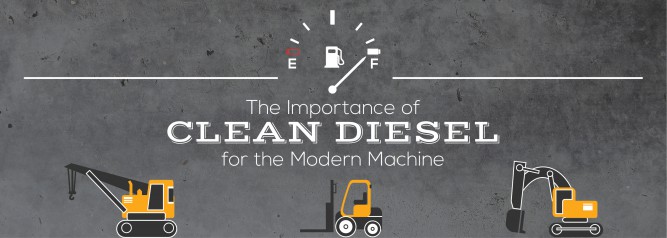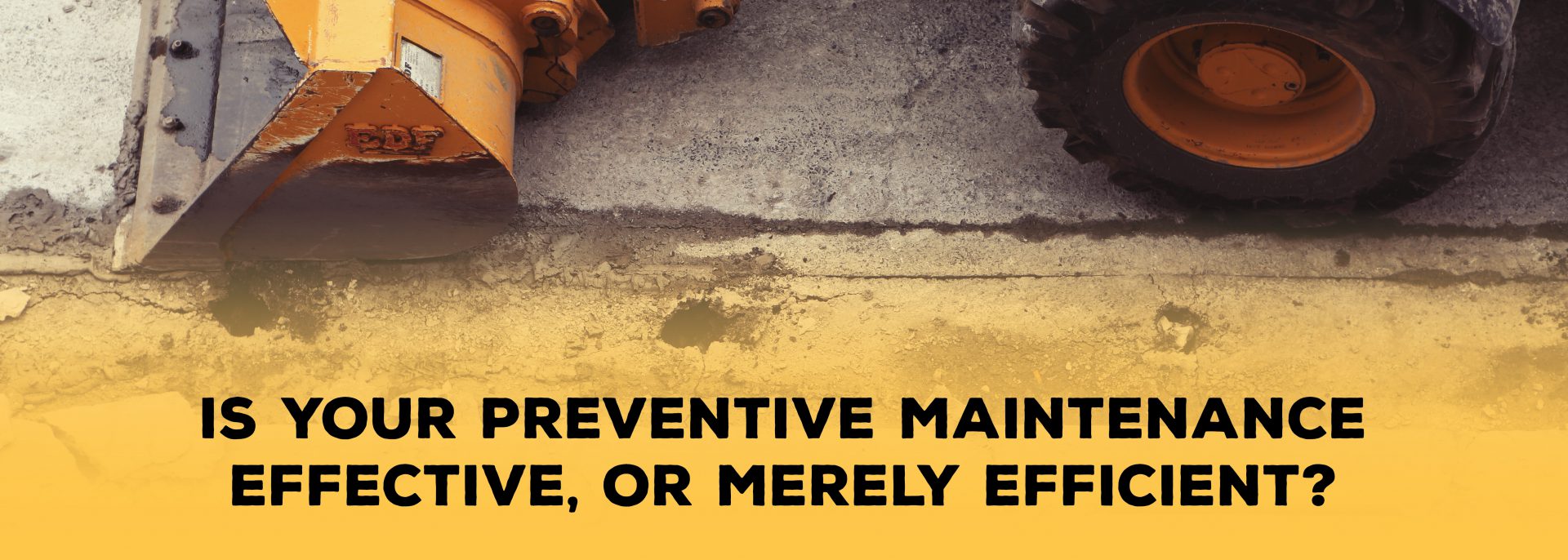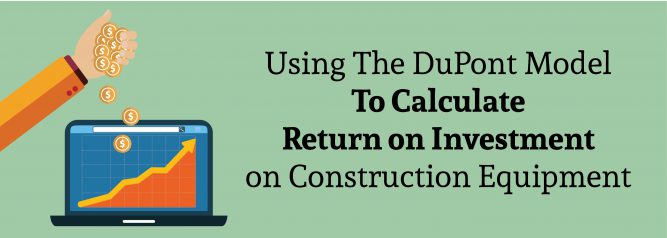
Using The DuPont Model To Calculate Return on Investment on Construction Equipment
Calculating return on investment is a critical factor when your dealership’s customers are contemplating a construction equipment purchase. New or used, the machine must be able to earn more than its operation costs. This same consideration applies to the construction equipment in your rental fleet. After all, it’s supposed to be a profit center for your dealership, not just a customer service.

What is the DuPont model?
It’s a formula that’s been around for more than a hundred years, yet it’s still applicable to your business today. It helps you assess return on investment by looking at specific elements of both profitability and asset turnover. Using this model can help you better understand the value of your construction equipment and help you better manage your overall business performance.
Here’s how it works
1. Profitability
This is your net income divided by your total contract revenue. Your profitability is affected by direct job costs and SG&A (selling, general and administrative) costs as well as other income and income expenses. As a fleet manager, your actions affect these figures:
- Ensuring equipment is available and reliably ready to work supports productivity and on-schedule, on-budget job performance
- Efficient maintenance and eliminating waste reduce direct job costs
- Minimizing overhead and SG&A expenses reduces direct job costs
- If you can sell used equipment for more than its book value, that increases earned income

2. Asset turnover
This is total contract revenue divided by operating assets. To understand your operating assets you have to:
- Measure the value of your current assets — cash, accounts receivable, retainage, and inventory
- Measure the value of your fixed assets — property, equipment, vehicles, and other capitalized items
Current and fixed assets combine to show your operating assets. These are the financial resources you use to produce contract revenue. You may choose to include longer-term strategic assets – for example, property investments, or something like quarry reserves if your customer is in that business. However, it’s important to note that these are not part of your operating assets.
Asset turnover defines your capital efficiency – how much revenue you earned for every dollar you spend on operating assets. So your goal is to reduce the value of operating assets you’re using to generate contract revenue.
Increasing capital efficiency
There are two key steps you can take to boost capital efficiency:
- Continuously evaluate your fleet to make sure it is comprised of working, productive machines rather than “bench warmers” that cost more than they earn
Carefully evaluate for each needed machine whether you should buy, lease, finance, or rent – dealerships are seeing steady increases in construction equipment rentals, because contractors have realized they don’t need to own everything they might possibly need.
In fact, how you approach equipment acquisition and financing has a major effect on your profitability and asset turnover. For instance, renting and leasing can reduce operating assets, which in turn improves asset turnover. The age of your fleet affects these numbers, too. Operating costs are generally higher for older machines, but they are not capital-intensive, and that benefits your asset turnover figure. On the other hand, newer machines have lower operating costs but take a bigger bite out of capital.
If you rent or lease a large percentage of your fleet, ownership costs will be higher but fixed your assets number will be lower. In the end, what is best depends on each individual situation and needs. For your dealership’s customers, though, renting can boost profitability as well as increase flexibility when it comes to bidding and completing jobs. Using the DuPont model will help them see those number in black and white.



 Carefully evaluate for each needed machine whether you should buy, lease, finance, or rent – dealerships are seeing steady increases in construction equipment rentals, because
Carefully evaluate for each needed machine whether you should buy, lease, finance, or rent – dealerships are seeing steady increases in construction equipment rentals, because 
